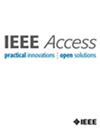基于100%可再生能源的二次电池微电网的优化规模和技术经济评价
IF 3.4
3区 计算机科学
Q2 COMPUTER SCIENCE, INFORMATION SYSTEMS
引用次数: 0
摘要
分布式可再生能源的快速发展使得储能对于需求可靠性和灵活的能源管理至关重要。由于新电池(FB)的投资成本很高,实现积极高效的经济需要努力。然而,第二寿命电池(SLB)在首次使用后容量下降了20-30%,可以作为替代能源存储来克服这一挑战。本文研究了共享储能的可再生潜力以及FB和SLB对生产消费者的可行性。此外,阈值是通过检查与可再生能源在实现100%可再生能源的道路上所占份额增加相关的财务义务来确定的。此外,碳税对额外二氧化碳减排成本的影响取决于碳配额。研究结果证实了SLB的优越性,它可以将吞吐量提高11.5%,同时将二氧化碳减少9.4%。在不同气候潜力的最佳混合动力系统(HPS)中,可再生能源份额(RF)高于59.2%和87%,以及对于低和高能源电价,都会导致昂贵的投资。在碳限值的早期阶段,增加碳税可以将二氧化碳减排成本降低高达5.2美元/公斤$,同时在较低的二氧化碳限值下避免高达2.1美元/公斤的FB额外成本。相比之下,将射频从95%提高到100%将使净现值(NPC)增加122.65%。在向清洁能源过渡的过程中,政府支持生产消费者的财务权衡将比以往任何时候都更加重要。本文章由计算机程序翻译,如有差异,请以英文原文为准。
Optimal Sizing and Techno-Economic Evaluation of Microgrids Based on 100% Renewable Energy Powered by Second-Life Battery
The rapid development of distributed renewable energy has made energy storage essential for demand reliability and flexible energy management. Due to the high investment costs of fresh batteries (FB), achieving a positive and efficient economy takes work. However, second-life batteries (SLB), whose capacity decreases by 20-30% after the first use, can be preferred as alternative energy storage to overcome this challenge. This paper investigates the renewable potential of shared energy storage and the feasibility of FB&SLB for prosumers. In addition, threshold points are determined by examining the financial obligations associated with an increasing share of renewables on the path to 100% renewable energy. Moreover, the impact of carbon taxes on extra CO2 reduction costs is assessed depending on the carbon quota. The results confirm the superiority of SLB, which increases throughput by 11.5% while reducing CO2 by 9.4%. Renewable fractions (RFs) above 59.2% and 87% in optimal hybrid power systems (HPS), in different climate potentials, and for low and high energy tariffs lead to costly investments. Increasing the carbon tax could reduce the cost of CO2 reduction by up to 5.2
${\$}/kg$
in the early stages of carbon limits while avoiding extra costs of up to 2.1
${\$}/kg$
for FB at lower CO2 limits. In contrast, increasing RF from 95% to 100% would increase net present cost (NPC) by up to 122.65%. It will be more critical than ever for governments to support prosumers’ financial trade-offs in the transition to clean energy.
求助全文
通过发布文献求助,成功后即可免费获取论文全文。
去求助
来源期刊

IEEE Access
COMPUTER SCIENCE, INFORMATION SYSTEMSENGIN-ENGINEERING, ELECTRICAL & ELECTRONIC
CiteScore
9.80
自引率
7.70%
发文量
6673
审稿时长
6 weeks
期刊介绍:
IEEE Access® is a multidisciplinary, open access (OA), applications-oriented, all-electronic archival journal that continuously presents the results of original research or development across all of IEEE''s fields of interest.
IEEE Access will publish articles that are of high interest to readers, original, technically correct, and clearly presented. Supported by author publication charges (APC), its hallmarks are a rapid peer review and publication process with open access to all readers. Unlike IEEE''s traditional Transactions or Journals, reviews are "binary", in that reviewers will either Accept or Reject an article in the form it is submitted in order to achieve rapid turnaround. Especially encouraged are submissions on:
Multidisciplinary topics, or applications-oriented articles and negative results that do not fit within the scope of IEEE''s traditional journals.
Practical articles discussing new experiments or measurement techniques, interesting solutions to engineering.
Development of new or improved fabrication or manufacturing techniques.
Reviews or survey articles of new or evolving fields oriented to assist others in understanding the new area.
 求助内容:
求助内容: 应助结果提醒方式:
应助结果提醒方式:


